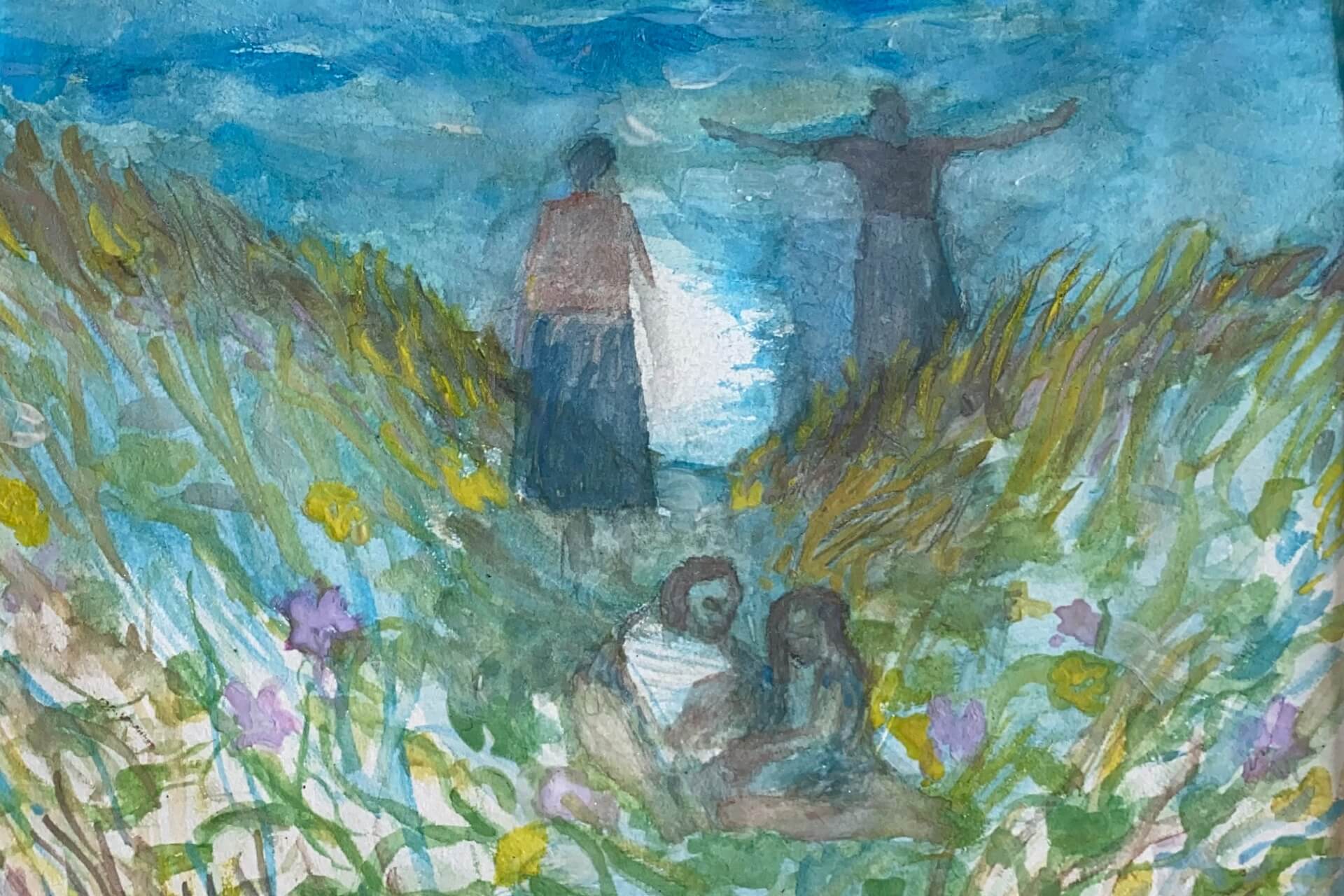Dec 20, 2022 Society
Using the jawbone of his kuia Muri-ranga-whenua (as the inheritance of cosmological knowledge) and his own blood (or whakapapa) as bait, Māui hauled up new whenua from the depths of the ocean. The whakapapa of the land is not only woven throughout the ocean but the land was birthed by it. As Moana Jackson wrote, “the tīpuna never forgot that, as much as whakapapa tied us to this land, it also tied us to the Pacific Ocean that we call Te Moana-Nui-a-Kiwa”. The iterations of Māui seen throughout the diverse cultures of our moana are a reminder of those whakapapa ecologies, those unifying threads of mauri, that connect us across space and time.
Pūrākau can help us navigate Moana relationality outside the bounds of colonial imagination. Many pūrākau call to power the interdependence of blood and water, whenua and moana; an intricate connection that Western legislation cannot encapsulate or codify. And pūrākau of Te Moana-Nui-a-Kiwa are at the heart of this kōrero, remembering our ancestral intimacies across vast ocean distances to transform our world anew.
The Foreshore and Seabed Act 2004 extinguished the customary rights of Māori in relation to takutai moana — sparking protests around the motu against the ongoing colonisation of Māori land and sea. The Marine and Coastal Area (Takutai Moana) Act 2011 was then instated, declaring the foreshore and seabed devoid of private or public ownership, with some limited avenues made available for Māori to claim recognition of customary rights.
In 2016, the coastal Te Tai Tokerau hapū of Te Kapotai raised an urgent claim through the Waitangi Tribunal asserting that the Marine and Coastal Area Act severely infringed on their rangatiratanga and connection to the ancestral coastline, thereby breaching Te Tiriti o Waitangi.
Crown engagement processes through the act were found to be deliberately cumbersome, unfair and risky in violating hapū rights to exercise mana in relation to the moana — rights which, through He Whakaputanga and Te Tiriti, long predate the 2011 act. This claim set in motion a wave of other hapū and iwi claims against the act, leading to the 2018–22 inquiry around rangatiratanga Māori in relation to takutai moana, the foreshore and seabed.
Much like other legislative frameworks of colonisation, the Waitangi Tribunal is a construction of the Crown, built on the myth that after all Treaty claims have been settled, we will be a postcolonial country. Te Tiriti o Waitangi (with tino rangatiratanga Māori as its constitutional basis) was meant to be honoured — not perpetually violated then ‘settled’ by a recidivist coloniser. It is important to hold the Crown accountable for its ongoing hara with a more transformative vision of constitutional and decolonial change.
In Our Sea of Islands, Epeli Hau‘ofa affirms that the Moana does not exist to divide or demarcate, yet the wording and application of the act are all about division and demarcation. For instance, section 51 requires a protected customary right, such as the collection of kaimoana, to have been exercised since 1840, in a particular part of the common marine and coastal area, in accordance with established or evolving tikanga. Iwi, hapū or whānau must apply for the recognition of their customary rights, a process requiring engagement with the Crown or High Court. Upon the recognition of customary marine title, iwi, hapū or whānau will have the capacity (albeit limited) to grant approval to activities that require resource consent. Here, the state affirms its strong hold over the conditions under which steps towards tino rangatiratanga can be expressed, even when it has no authority to do so.
The concept of ‘interest convergence’, developed by Black legal theorist Derrick Bell, says that the settler state offers “progress” to Black or Indigenous people only when it converges with the interests of whiteness. While the 2011 Act can be considered an improvement on its horrific 2004 forebear, in many ways it is an affirmation of the state’s colonial violence: denying our mana motuhake, distorting the meaning of tikanga within Crown law, separating blood from water, land from the sea.
This demarcation and commodification under colonial capitalism can be incredibly violent, even to the point of ecological collapse. Lashed by the compounding forces of climate imperialism, the ocean now rises against us. Our Pasifika whanaunga in Tuvalu recently declared that in response to the existential crisis of rising sea levels, they would fully digitise the island, replicating its physical and cultural treasures in the cloud. This digital record, Tuvaluan government minister Simon Kofe wrote, would “remind our children and our grandchildren what our island once was”.
The colonial climate crisis that Indigenous peoples have long been experiencing and resisting alters the fabric of the land and sea with which our identities, through whakapapa, are inextricable. Here in Aotearoa, rising sea levels will alter the shape of our foreshore to the detriment of coastal communities; some of our hapū are already losing their sea-side urupā to the changing dynamics of Hinemoana and Tangaroa. The legislative and systemic violence against our moana (and the lands and people born from it) will not cease through incremental reform but rather through constitutional and economic transformation which seeks to restore our rangatiratanga Māori and oceanic solidarities. Matike mai, Aotearoa!
With the inextricable link between earth and ocean, to speak of Land Back as the essence of decolonisation is also to speak of Moana Back. The call is “hoki whenua mai, hoki moana mai” — not only in the repatriation sense (return the land, return the ocean), but in the restoration of our relationship with the land and waters (return to the land, return to the ocean) to one beyond the exploitations of colonial capitalism. Moana Back requires understanding of how water calls attention to itself, holds stories and, by extension, has intelligence as a being outside the bounds of state personhood. To protect our moana through the restoration of rangatiratanga is to enable the flourishing of whakapapa and shift our mokopuna into the transformative light of decolonial futures.
–
This story was published in Metro N° 437.
Available here.







